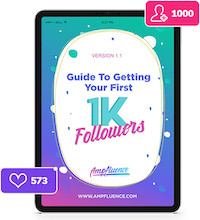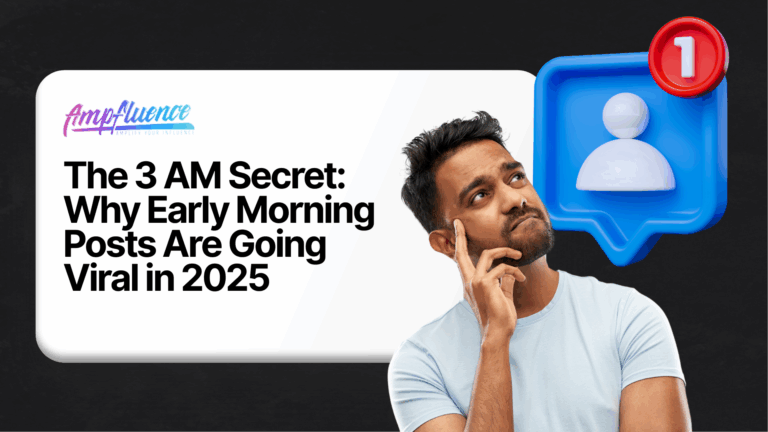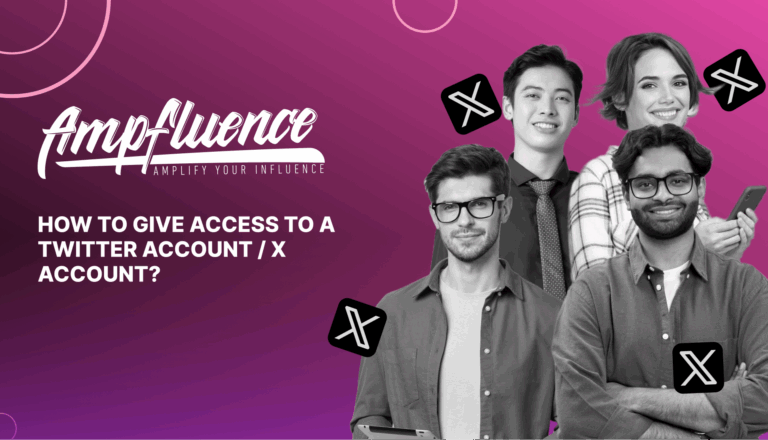Instagram is one of, if not the biggest social media platforms we have today with more than 1 billion monthly active users, and the number is still growing rapidly. Meaning, Instagram can be a very powerful marketing platform where you can reach out to a lot of potential prospects and grow your audience.
However, it’s also no secret that Instagram has become so saturated, and marketing on Instagram is now very competitive. Getting noticed amidst millions of other posts every day is certainly difficult if you are a relatively new or small brand.
So, the question is, how can we maximize this opportunity to market our brand on Instagram? And this is where Instagram SEO comes in.
Instagram SEO is, in a nutshell, applying the principles of SEO to your Instagram profile with one objective: so more people can find your profile and content via organic ways, which is the Instagram Search and the Explore Page.
So, how can we implement Instagram SEO? Below are 8 techniques you can implement right away. However, let us begin by briefly discussing the Instagram algorithm, which will be the basis of how we should optimize your Instagram profile and account.
The Instagram Algorithm
Google and the other search engines have their respective algorithms to decide which pages will rank higher on their SERP (Search Engine Results Page). With the same principle, the Instagram algorithm determines which posts (photos and videos) will ‘rank’ high in the user’s feed, in Instagram Search, and on the Explore page.
Similar to traditional SEO, the higher your Instagram post ‘ranks’, the more organic reach it will generate.
So, the question is, how does the Instagram algorithm work? What factors will determine this ‘ranking’?
As with Google, Instagram has kept its algorithm a secret from the public, but there are some details of the algorithm that have been made public:
- Instagram doesn’t favor videos over photos or the other way around. If you engage with more videos regularly, then you’ll get more video recommendations and vice versa.
- The biggest factor determining your Instagram ‘ranking’ is user engagement. Instagram utilizes AI and machine learning technologies to monitor user engagement data in real-time and is constantly updating.
- The type of Instagram account (Personal, Business, Creator) is not a factor.
- The Instagram algorithm is actively monitoring for bought likes and fake followers that might get your account banned
- How fast you get engagements (i.e. a lot of engagement in the first 10 minutes) doesn’t provide an extra effect on the overall ‘ranking’
Instagram SEO Tips
So, how can we optimize our profile and posts to rank higher according to this algorithm? Here are some Instagram SEO tips to help you navigate the social landscape.
1. Optimizing for Hashtags
Hashtags remain one of the best ways to get discovered by new audiences on Instagram. Using the right hashtag at the right moment can significantly improve your engagement, which will translate into more followers and more conversions.
The best approach here is to treat Instagram hashtags as you would keywords in traditional SEO. Traditional SEO strategy is essentially about creating the best, most relevant content for a target keyword, and if you want to ‘rank’ for a hashtag on Instagram, then our main approach is to post a relevant photo or video for the hashtag.
In general, there are three types of hashtags you should target:
- Hashtags specific for your niche/audience. Hashtags that are often used by your target audience. However, if the hashtag is so popular, your posts might not be noticed, so finding the right balance is very important.
- Branded hashtags: Keywords that include your brand name. However, timing is very important in using branded hashtags. Make sure your content is indeed relevant when you are using a branded hashtag.
- General hashtags: Hashtags that are not directly related to your brand/niche, but might increase the likelihood of reaching a new audience. This includes holiday hashtags, hashtags related to recent trends, etc.
Instagram allows us to include 30 hashtags on any posts. However, this doesn’t necessarily mean you should use all 30 every time which can make your post look spammy. Choosing up to five is generally enough, as long as these hashtags are highly targeted.
Having a clear hashtag strategy is very important if you want to improve your Instagram reach. Do your research, find your target keywords, and remember that timing is also very important here, which we will discuss again further below.
2. Optimizing Instagram Profile for Keywords
Instagram Search performs very similarly to Google search, so most of us should understand how it works. However, one thing to note is that we can search for three different things on Instagram Search: accounts, hashtags, and locations.
As we’ve discussed, the most important factor in the Instagram algorithm is the user’s engagement. However, due to the nature of Instagram Search, keywords are still a relevant factor. In Search, Instagram displays the most relevant accounts/hashtags/locations according to the user’s typed queries/keywords.
So, we should optimize our Instagram profile for target keywords in the following areas:
Instagram profile name and username
It’s always a good idea to include your focus keyword on your business name and @username, but make sure it’s natural (i.e. it’s going to make sense for your human audience).
For example, if your target keyword is “restaurant”, then you can include it in your profile name and @username. However, if you can’t include your keyword naturally, don’t force it. There are many accounts that don’t include their focus keyword and still rank pretty well. If you search for “restaurant” on Instagram, for example, you’ll find accounts that don’t include “restaurant” in its @username.
A great practice is to edit your business name (the name field in your Instagram Bio) and use words that describe what your Instagram profile and business is about.
Instagram Bio
Your Bio is your best opportunity to use your target keywords naturally. An important thing to consider your audience’s search intent so you can use the target keywords in the right context.
You can add clickable hashtags on your bio, website URL, Twitter handles, etc. You can also put trackable links here if you want to measure your account’s performance. Remember to focus on providing information for your target audience and don’t keyword stuff. Make sure your bio is fun and attractive.
Also, you can include secondary/related keywords in your bio. If, for example, your primary keyword is “restaurant”, then you might also want to target keywords related to your dish like “pizza”, “steaks”, etc.
Do’s and don’ts in optimizing your Instagram username and bio.
- Make sure your profile is set public since a private profile is obviously not searchable
- Register to a Business or Creator account if you want more control and to unlock analytics/marketing features to improve visibility
- Make sure to use a profile image that can support your target keyword and aligns well with your brand. Your logo is the usual approach, but you can certainly use other images.
3. Optimize For Engagement
As we’ve discussed, the most important factor in the Instagram algorithm is engagement, and to improve engagement, we have to improve three key aspects of our posts:
Attractiveness
In this very saturated Instagram environment, it is very important to publish content that your target audience would be attracted to. Post carefully curated, interesting photos/videos with attractive captions. Your objective here is to capture their attention as soon as possible with each post. Remember that if the engagement for one post is hush, it can also help your future posts.
Timing
Instagram doesn’t display your content chronologically on its Explore page, but Instagram does confirm that newer posts are more likely to appear first in a user’s feed.
So, spotting the right time to post your photos/videos is very important if you want to grow your Instagram reach. If you have a Business or Creator account, then this should be pretty simple; you can simply check the Instagram Insights and check when your followers are the most active. However, this might now work if you are a brand new account without too many followers or if you don’t have an Instagram Business.
In such cases, you can use various Instagram analytics tools like BuzzSumo or SproutSocial for this purpose, but you’d need to know your target audience.
Relationships
Instagram does take account of the ‘depth’ of engagements. That is, if someone likes and comments on your post often, Instagram will recommend more of your posts to this specific user.
This is why knowing your target audience and regularly posting content that will resonate with them is very important. Make sure to conduct proper market research and define your target audience, and curate your content based on these insights.
4. Using Location Tags
As discussed, on Instagram we can search for location besides hashtags and usernames, so we should capitalize on this fact in our Instagram SEO.
A key thing to consider is that unlike hashtags where we can use up to 30 hashtags in a post, we can only use one location tag with each post.
If you are a brick and mortar business, then using geolocation tags is fairly simple: tag your own location or the city you’re in. However, you can also be creative with tagging popular locations that your target audience frequently searches/visits. People are always looking for new locations to visit, so tagging your posts to popular locations may improve your reach by making your post shown in more search results.
However, consider the relevance of your posts with these locations. For example, it won’t make sense to tag alcoholic beverages to church locations.
5. Using Stories To Improve Instagram SEO
While Instagram doesn’t really favor either photos or videos, it’s no secret that video content drives more engagements at the moment, and 50% of surveyed consumers admitted that they’ve engaged with a brand after watching a social media video.
Instagram Stories, on the other hand, is a great platform to post your video content and get more engagement. In the past couple of years, Stories have grown rapidly and have been competing with Instagram’s main feed as the main way of discovering new posts on Instagram. The good news is, if you can improve your Stories engagement, it will also help the performance of your regular posts.
Here are some easy ways you can use to help hold your viewers’ engagement on Stories:
- Use attractive and colorful text prompts to communicate clearly what you are posting on Stories and why it might be interesting for your audience.
- Be concise and straight to the point, and capture their attention as early as possible.
- Add music! 60% of Stories are watched with the sound on, so use music or voiceover whenever it’s appropriate.
Encourage your viewers to answer questions, pools, and so on to improve your engagements. This will also be useful if you want to collect audience insights.
6. Ask Your Audience to Engage
Sometimes, all it takes to get more engagement to improve your Instagram SEO is to simply ask your audience. Ask your followers to share and like your posts.
if you have already provided relevant and valuable content they liked, chances are they are going to be happy to like and share your posts. You can also ask questions, run polls, and reply to your audience’s questions (in Stories), and respond to comments. Have a mindset of creating a community for your brand, and improve your engagement steadily.
Another common and effective practice is to post (or repost) user generated content. For example, you can repost photos of your product that has been shared by your followers. This can help in creating a two-way relationship and improve your organic reach in the long-run.
7. Use Alt Text in Your Photos
Instagram’s alternative text (alt-text) is a feature that allows us to assign attributes to Instagram photos.
This feature was originally developed for visually-impaired users so they can enjoy the Instagram experience, but we can also use the feature to tell Instagram’s algorithm about the context of our posts. Instagram is utilizing AI technologies to better understand the context of each image/video, and alt text can help in this process.
The idea is to include your target keyword on the image’s alt text, but focus on describing the content and context of the post as best as possible.
To add alt text, you can go to the screen where you usually write your caption and tap on the Advanced Settings option. You will then find a Write Alt Text section under accessibility, then you can write your alt text on the next screen.
You can also edit alt text in older Instagram posts by clicking Edit on the post, and then click Edit Alt Text on the bottom-right corner. You can then add/edit your alt text and click save.
8. Optimizing Captions
Optimizing your caption is useful not only in Instagram Search, but you can also improve your content’s reach in Explore via your post’s caption.
Instagram has confirmed that they are now using AI and machine learning technologies to determine which content is displayed on the Explore page. This is done by looking at keywords used on the post (including the post’s caption) to determine the context of the post, and how similar the content is to other posts.
Of course, keywords used on your profile name, @username, and alt text would also matter.
So, start including your target keywords on your caption, but make sure it’s written naturally and focus on providing comprehensive information for your target audience.
Final Thoughts
There are two main focuses in implementing Instagram SEO: spreading your target keyword(s) in your posts (captions and alt texts) and profile (@username, bio name) and improving posts’ engagements.
Similar to traditional SEO, however, you might not see the results of the Instagram SEO implementation right away, and it can be a long-term game. So, it’s important to always monitor your Instagram Insights as you implement the 8 tips above so you can maintain consistency and make adjustments when needed.







67 Responses
Great post! Thanks for sharing.
Great techniques! Instagram became a lot popular in the last few years and posting nice content everyday will help a lot! Thanks for sharing!
Valuable breakdown of Instagram SEO. The revelation about user engagement as the key factor in ranking is eye opening. Implementing these techniques can undoubtedly boost visibility in a saturated platform.
Interior and Exterior Painting Services in Port Sulphur LA
This is exactly what I needed to read today Your words have given me a new perspective and renewed hope Thank you
IPTV Premium is a game-changer for sports enthusiasts like me. I can catch all the action live with their live streaming options!
The design and layout of this blog are so aesthetically pleasing and user-friendly It’s a pleasure to navigate through
This blog is like a virtual mentor, guiding me towards personal and professional growth Thank you for being a source of inspiration
Your writing is so eloquent and persuasive You have a talent for getting your message across and inspiring meaningful change
Your words have resonated with us and we can’t wait to read more of your amazing content. Thank you for sharing your expertise and passion with the world.
This post hits close to home for me and I am grateful for your insight and understanding on this topic Keep doing what you do
I love how this blog celebrates diversity and inclusivity It’s a reminder that we are all unique and should embrace our differences
This blog is a great resource for anyone looking to live a more mindful and intentional life Thank you for providing valuable advice and tips
Your blog has quickly become one of my favorites I always look forward to your new posts and the insights they offer
Nice one. I like your writing style and it is very informative.
As someone who struggles with mental health, I appreciate the support and empathy displayed in your blog It means a lot to know I’m not alone
Your posts always seem to lift my spirits and remind me of all the good in the world Thank you for being a beacon of positivity
As a new reader, I am blown away by the quality and depth of your content I am excited to explore your past posts and see what else you have to offer
Your writing is so engaging and easy to read It makes it a pleasure to visit your blog and learn from your insights and experiences
This blog is not just about the content, but also the community it fosters I’ve connected with so many like-minded individuals here
This is such an informative and well-written post! I learned a lot from reading it and will definitely be implementing some of these tips in my own life
Narrative complexity in anime explores multifaceted human experiences, presenting nuanced characters that challenge traditional storytelling approaches.
These Hawk Tuah Store t-shirts are quality made, always looking fresh.
Your positivity and optimism are contagious It’s impossible to read your blog without feeling uplifted and inspired Keep up the amazing work
California Business Journal is a leading business journal that publishes inspiring stories and valuable insights for entrepreneurs and small-medium businesses.
Their posts always leave us feeling informed and entertained. We’re big fans of their style and creativity.
Thank you for the amazing blog post!
Your photography and visuals are always so stunning They really add to the overall quality of the content
You have a way of explaining complex topics in a straightforward and easy to understand manner Your posts are always a pleasure to read
What other topics would you like to see covered on the blog? Let us know in the comments!
Your honesty and vulnerability in sharing your personal experiences is truly admirable It takes courage to open up and I applaud you for it
It means the world to us to hear such positive feedback on our blog posts. We strive to create valuable content for our readers and it’s always encouraging to hear that it’s making an impact.
Thank you for always being open and honest with your readers It’s refreshing to see a blogger who is unafraid to be vulnerable and real
Your positive energy and enthusiasm radiate through your writing It’s obvious that you are truly passionate about what you do
Your blog always puts a smile on my face and makes me feel better about the world Thank you for being a source of light and positivity
Leave a comment and let us know what your favorite blog post has been so far!
Your blog posts never fail to entertain and educate me. I especially enjoyed the recent one about [insert topic]. Keep up the great work!
ToothFairyAI delivers advanced AI agents in Australia, empowering businesses with 24/7 intelligent automation. Our autonomous agents streamline operations, enhance productivity, and optimize customer retention, compliance, and financial analysis. With seamless integration, real-time insights, and privacy-first solutions, scale your business without added overhead. Unlock the potential of custom, private AI solutions with ToothFairyAI – the future of business automation.
I just wanted to take a moment to express my gratitude for the great content you consistently produce. It’s informative, interesting, and always keeps me coming back for more!
I love how this blog promotes a healthy and balanced lifestyle It’s a great reminder to take care of our bodies and minds
I love how this blog promotes a healthy and balanced lifestyle It’s a great reminder to take care of our bodies and minds
While you focus on[original application, I can see this working well for different application too. The underlying principles seem broadly applicable across category of situations.
The photographs and visuals used in this blog are always stunning They really add a beautiful touch to the posts
I always look forward to reading your posts, they never fail to brighten my day and educate me in some way Thank you!
Your writing is so eloquent and persuasive You have a talent for getting your message across and inspiring meaningful change
It’s clear that you truly care about your readers and want to make a positive impact on their lives Thank you for all that you do
Your blog is a great source of positivity and inspiration in a world filled with negativity Thank you for making a difference
I have been following your blog for a while now and have to say I am always impressed by the quality and depth of your content Keep it up!
I always find myself nodding along and agreeing with your wise words Your insights and advice are truly valuable
We just wanted to take a moment to acknowledge all the hard work and effort you’ve been putting in lately. Keep up the amazing job, you’re doing great!
Wow, I had never thought about it in that way before You have really opened my eyes to a new perspective Keep up the great work!
Let us know in the comments which of their posts has resonated with you the most.
This blog is like a safe haven for me, where I can escape the chaos of the world and indulge in positivity and inspiration
Your blog has been a constant source of support and encouragement for me I am grateful for your words of wisdom and positivity
Tired of fake chats? Try FastSyt’s real people. http://www.fastsyt.com
This blog post is packed with great content!
Meet, chat, and love — all on FastSyt. http://www.fastsyt.com
Want something real? Try FastSyt dating app. http://www.fastsyt.com
FastSyt — your heart’s new favorite app. http://www.fastsyt.com
Troy Dualam’s fiberglass reinforced tanks offer superior strength, making them a leading choice for facilities requiring reliable Fiberglass Reinforced Plastic equipment.
Your writing brings clarity and encouragement exactly when I need it.